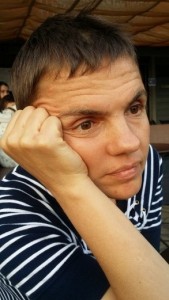We are glad to invite you to a seminar by Dr. Tatiana Tatarinova , titled “What Mutations Can and Cannot Tell Us”
Seminar abstract
Large scale human, animal and plant genomic projects resulted in accumulation of large datasets of mutations and collections of phenotypes. We will consider methods of SNP analysis, detection of functionally important regions on a genome, prediction of phenotypes based on consideration of mutations. These tasks are important for agriculture, health care, history, and anthropology, among other subjects. We will consider and compare the existing methods of data collection, mutation analysis and describe applications to modern and ancient DNA.
Speaker introduction
 Tatiana Tatarinova is a bioinformatician with over fifteen years of research in academic in industrial settings. She is Associate Professor of Research Pediatrics and Spatial Sciences, at the University of Southern California, where she leads the CHLA computational biology group. The group is actively collaborating with researchers in worldwide in the area of development of algorithms for biological data analysis. In the past, Tatiana Tatarinova worked as a computational scientist for Ceres, inc., Georgia Institute of Technology and University of Glamorgan. Tatiana Tatarinova is involved in development of data mining tools for a range of applications, such as: genome annotation, promoter analysis, phenotype prediction, identification of regulatory motifs, ancestry identification, bacterial evolution, and ancient DNA analysis.
Tatiana Tatarinova is a bioinformatician with over fifteen years of research in academic in industrial settings. She is Associate Professor of Research Pediatrics and Spatial Sciences, at the University of Southern California, where she leads the CHLA computational biology group. The group is actively collaborating with researchers in worldwide in the area of development of algorithms for biological data analysis. In the past, Tatiana Tatarinova worked as a computational scientist for Ceres, inc., Georgia Institute of Technology and University of Glamorgan. Tatiana Tatarinova is involved in development of data mining tools for a range of applications, such as: genome annotation, promoter analysis, phenotype prediction, identification of regulatory motifs, ancestry identification, bacterial evolution, and ancient DNA analysis.
